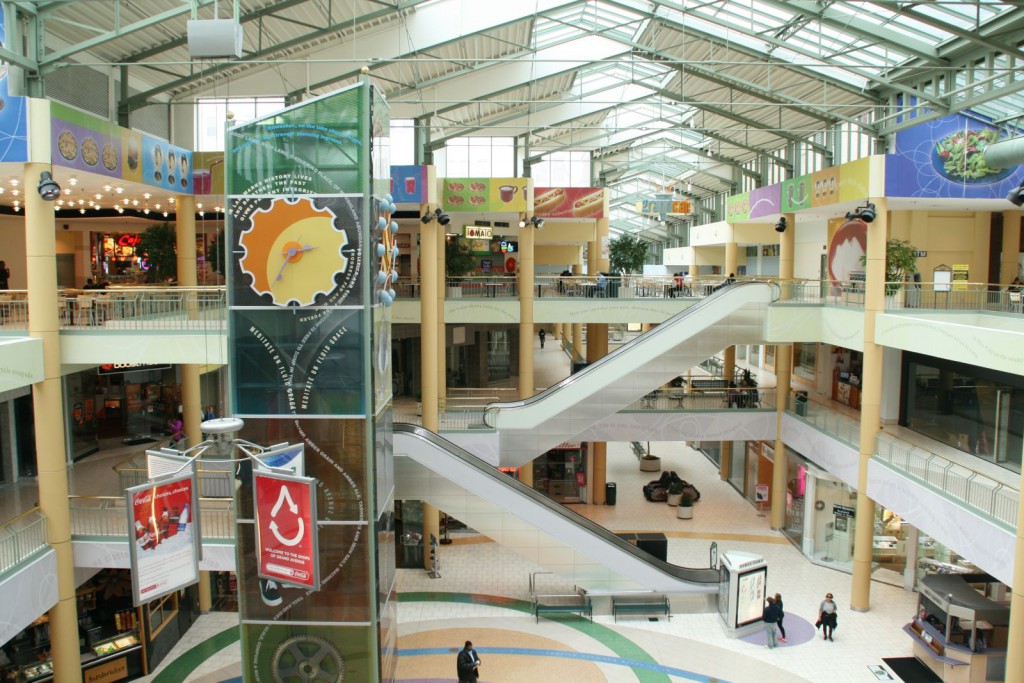Downtown TIF Will Bail Out Three Districts
City increasingly using downtown revenue to support ailing neighborhoods.
The Department of City Development is proposing to use excess property tax revenue from a downtown tax incremental financing (TIF) district to bail out three underperforming districts across the city.
The TIF district created to fund the redevelopment of the properties attached to the Grand Avenue Mall starting in 1998 (#37) is generating approximately $2.2 million in excess property tax revenue now that the $31.5 million in project costs associated with it have been paid off. “We are really at that point where the [TIF district] is ready to close and payoff,” said DCD economic development specialist Dan Casanova in presenting the plan to the Common Council’s Zoning, Neighborhoods & Development Committee on Tuesday morning.
TIF districts are intended to fund projects that otherwise wouldn’t move forward without the public investment, with the borrowing costs being paid off with incremental property tax revenue collected in the district over a maximum of 27 years. And in the case of the Grand Avenue Mall, despite the mall’s failure, that’s exactly what happened. Property values in the district are up approximately $80 million since 1998. But for at least three other TIF districts, the increased revenue isn’t paying off the debt.
State law allows overperforming TIF districts to become “donors” to those that have fallen behind.
The Mitchell Street TIF district (#71) would receive $2.66 million from the downtown TIF district over the next three years. “This [TIF district] is a victim of bad timing. It was created in 2008 as the Great Recession began,” said Casanova. It was used to fund streetscaping improvements, security cameras and property improvement grants. The district has generated only $9,379 in incremental property tax revenue as of December 31st, 2018, approximately $1.8 million behind expectations.
The Bishop’s Creek TIF district (#72) was also created in 2008 to fund the redevelopment of a former tannery site and is in the same situation. A 55-unit affordable housing development at N. 32nd St. and W. Hampton Ave. was a central component of the plan. “That project was completed and reached the value we projected,” said Casanova. But the rest of the district has declined in value. It has generated $31,843 in incremental property tax revenue, approximately $800,000 behind the forecasted amount as of the end of 2018. The Grand Avenue TIF district would contribute $2.57 million to the project, but not until 2022.
TIF districts can also be used to pay for extra public infrastructure improvements within a half-mile of their borders and to fund affordable housing in their last year, and the Grand Avenue district “has already been amended to make several public infrastructure improvements in the Westown neighborhood,” said Casanova. That includes $750,000 for a facade grant for the Milwaukee Symphony Orchestra‘s redevelopment of the Grand Warner Theatre and $3 million for rebuilding the reconfigured N. 2nd St. after the project is completed. It also was used for a $1.9 million loan for reconfiguring the Boston Store Building, much of which is still in escrow.
How will the pandemic impact this plan if property values crater? The independent City Comptroller opined in a letter that the downtown district could still pay off its debt and the donations even if property values dropped 25 percent. Casanova said in a worst-case scenario the donations would not be paid. But even if values drop, revenue might not. “If assessments go down, the tax rate is likely to go up,” he said.
The committee unanimously approved the plan.
This is the second time this year DCD has advanced a donor TIF district plan. Three downtown districts were used to bailout Century City earlier this year. For more on the city’s use of TIF districts, see our coverage of the 2019 annual report.
Legislation Link - Urban Milwaukee members see direct links to legislation mentioned in this article. Join today
If you think stories like this are important, become a member of Urban Milwaukee and help support real, independent journalism. Plus you get some cool added benefits.
Related Legislation: File 191951
Eyes on Milwaukee
-
Church, Cupid Partner On Affordable Housing
 Dec 4th, 2023 by Jeramey Jannene
Dec 4th, 2023 by Jeramey Jannene
-
Downtown Building Sells For Nearly Twice Its Assessed Value
 Nov 12th, 2023 by Jeramey Jannene
Nov 12th, 2023 by Jeramey Jannene
-
Immigration Office Moving To 310W Building
 Oct 25th, 2023 by Jeramey Jannene
Oct 25th, 2023 by Jeramey Jannene






















